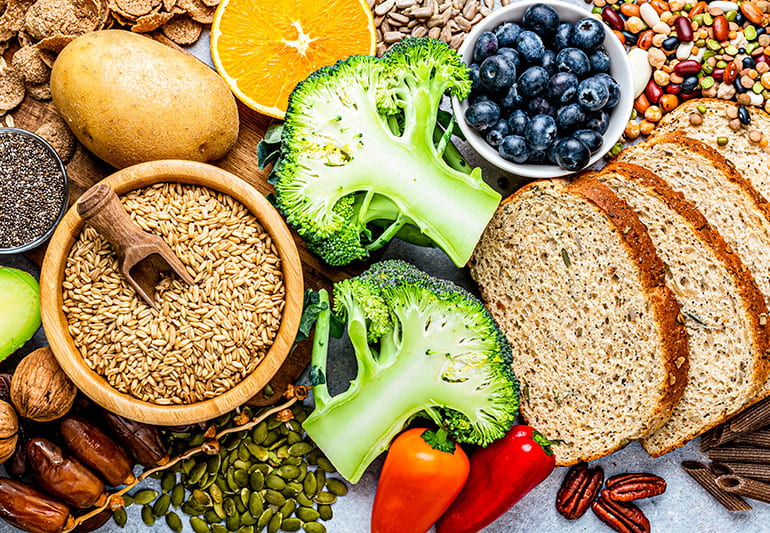Dietary fiber has been shown to help manage and reduce the risk of type 2 diabetes. Eating a high-fiber diet increases satiety, decreases body weight, and improves glucose insulin responses. Fiber is classified as either soluble or insoluble. Soluble fiber dissolves in water and lowers glucose levels and cholesterol, while insoluble fiber helps move food through the digestive system. Soluble fiber ferments in the colon to produce short-chain fatty acids (SCFA) which may help blood glucose levels. Sources of insoluble fiber include whole wheat products, wheat bran, quinoa, legumes, leafy greens, almonds, and walnuts. Sources of soluble fiber include oats, peas, beans, apples, citrus fruits, carrots, and barley.
The Dietary Guidelines for Americans recommend that individuals consume at least 14g of fiber per 1,000 calories or 28g of fiber per 2,000 calories. However, most Americans fail to meet these recommendations. According to the American Diabetes Association, foods naturally high in fiber will have at least 2.5 grams and are often labeled as a “good source.” In comparison, foods labeled “excellent sources” contain more than 5 grams of fiber per serving. It’s essential to get a combination of insoluble and soluble fiber via the diet to help reduce the risk of type 2 diabetes.
To learn more about fiber and other carbohydrates, visit:
https://diabetes.org/healthy-living/recipes-nutrition/understanding-carbs/get-to-know-carbs
- Weickert MO, Pfeiffer AFH. Metabolic effects of dietary fiber consumption and prevention of diabetes. The Journal of Nutrition. 2008;138(3):439-442. doi:10.1093/jn/138.3.439
- The Nutrition Source. https://www.hsph.harvard.edu/nutritionsource/carbohydrates/fiber/. Published February 2, 2023. Accessed March 2, 2023.
- Weickert MO, Pfeiffer AFH. Impact of dietary fiber consumption on insulin resistance and the prevention of type 2 diabetes. The Journal of Nutrition. 2018;148(1):7-12. doi:10.1093/jn/nxx008
- Get to know carbs. Get to Know Carbs | ADA. https://diabetes.org/healthy-living/recipes-nutrition/understanding-carbs/get-to-know-carbs. Accessed March 23, 2023.
All Blogs are written by Professionals in the fields of Nutrition, Human Development and Diabetes.
